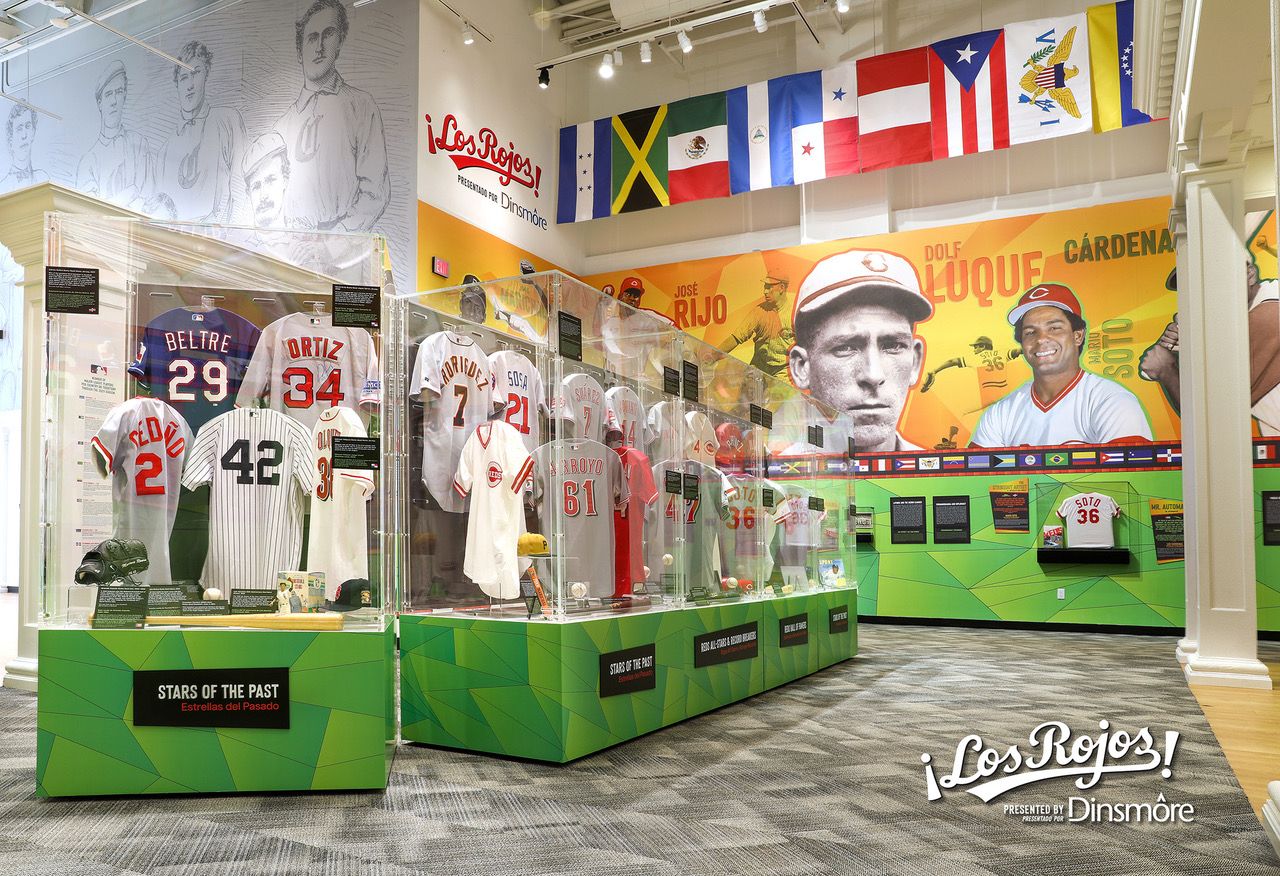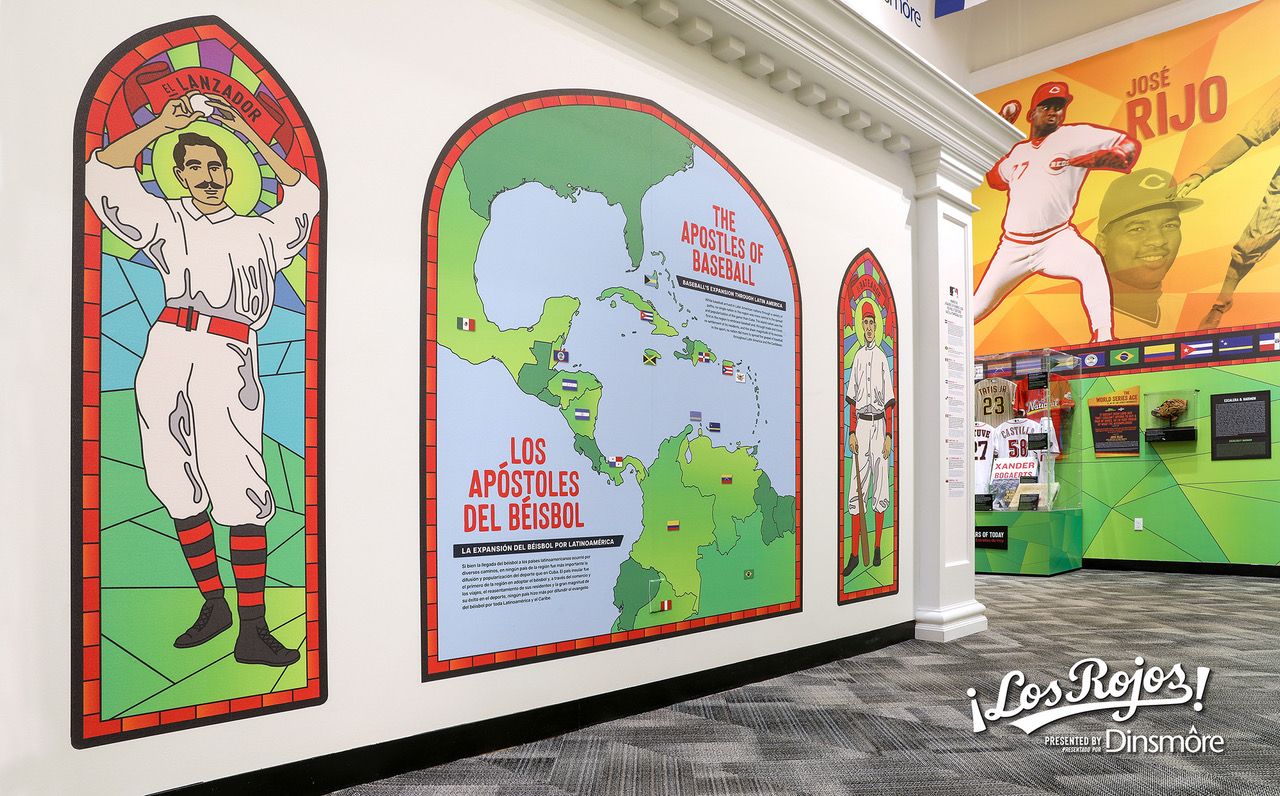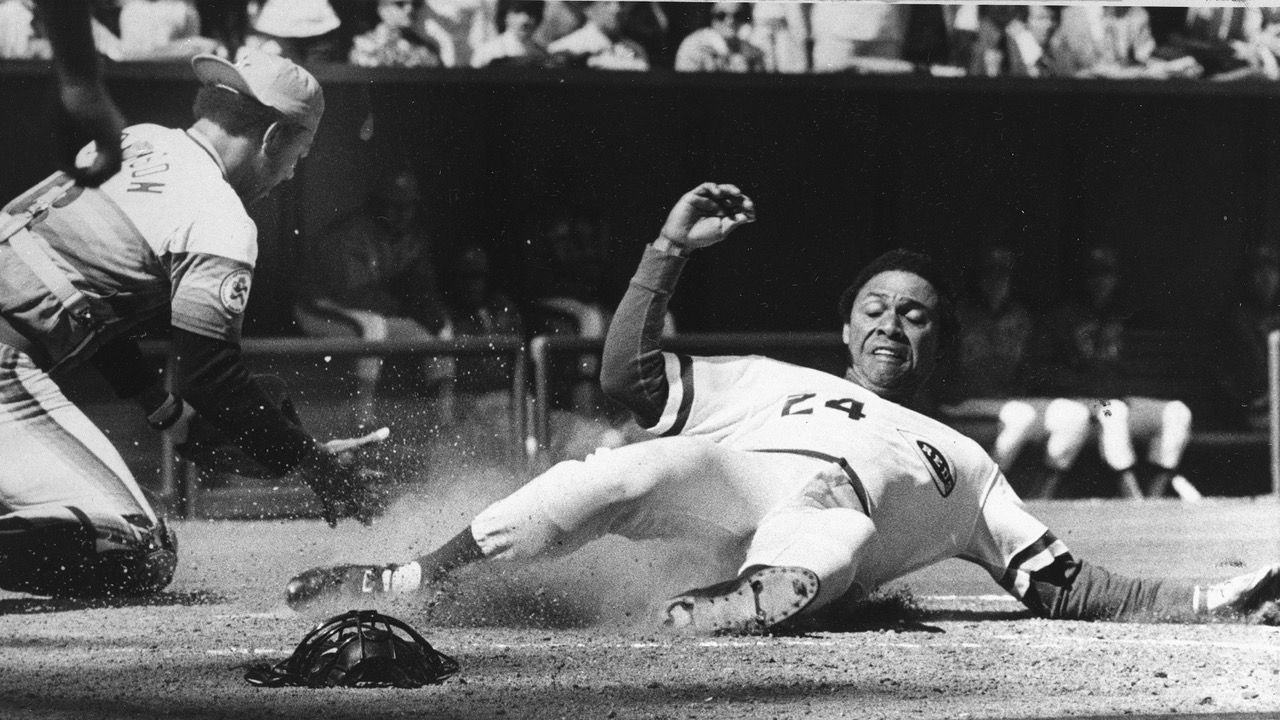CINCINNATI – While the Cincinnati Reds are just getting started with their regular season, the team’s hall of fame aims to celebrate some of the franchise’s trailblazing international stars of the past.
What You Need To Know
- ¡Los Rojos!: A Celebration of the Latino Impact on the Reds and Major League Baseball is on display through the season
- The exhibit examines Latin America's impact on baseball over the past 150 years
- The Reds first two Latin players came from Cuba in 1911
- The Hall of Fame and Museum is open every day during the season
The Reds Hall of Fame and Museum has a new exhibit called, “¡Los Rojos!: A Celebration of the Latino Impact on the Reds and Major League Baseball.”
It provides an in-depth look at the rich and complex history of baseball in Latin America. It also showcases the lives of Latino stars, such as Puerto Rico’s Roberto Clemente, who helped popularize the game on an international level.

Rick Walls, executive director of the museum, said while baseball is America’s national pastime, the sport also takes on that role in most of Latin America as well. That includes Mexico, Central America, South America and the Caribbean.
“Visitors to the Los Rojos exhibit will see baseball from a different light as we immerse fans into Latin America culture in this exhibit unlike any other at the Reds Hall of Fame,” said Walls, who’s directed the 15,000-square-foot museum since 2007.
Seventeen different countries in Latin America and the Caribbean have produced Major League Baseball players. More than 30% of MLB players today are of Latino descent.
“Since its introduction to baseball more than 150 years ago, Latin America has embraced the game with a fervor not seen in most other places around the world,” Walls said. “It’s also produced some of the game’s most revered icons, and continues to produce some of the top talent in the sport.”
The Los Rojos exhibit touches on the sport’s growth in Latin America and highlights many of baseball’s most famous stars, many of whom played in Cincinnati. That includes players like Tony Pérez (Cuba), David Concepción (Venezuela) and Dolf Luque (Cuba).
Pérez and Concepción, two of the Reds’ all-time greats, have had their numbers retired by the franchise.
Prior to this season, a total 187 players of Latin American heritage have played for the Reds. The team’s first two Latin players were infielder Rafael Almeida and outfielder Armando Marsans, from Cuba.
Almeida and Marsans both signed with the club in the summer of 1911. But the club first witnessed their talent in 1908 during an exhibition tour of Cuba.
The move was controversial. There was an unwritten rule against white Major League clubs signing African American players or dark-skinned players who might be mistaken for African American, Walls said.
The Reds crafted public statements stressing Almeida and Marsans were of Spanish descent and didn’t have African ancestry, Walls said.

Almeida’s career was brief, but Marsans made his mark. He became the first Latino player to start regularly for a team in the white Major League. He batted an even .300 in four seasons with the Reds.
The acquisition of Almeida and Marsans didn’t result in an immediate influx of Cuban players, but it paved the way for an eventual pipeline of talent from Cuba to Cincinnati.
In 1955, the Reds entered a formal affiliation agreement with the Sugar Kings, a Class AAA club based in Havana, Cuba. The Reds were one of the first teams with a minor league affiliate in Latin America, Walls said.
Over six seasons, the Reds used their relationship with Sugar Kings and its presence in Cuba to sign and develop dozens of future big leaguers, including Reds Hall of Fame shortstop Leonardo “Leo” Cardenas, all-star pitcher Miguel “Mike” Cuellar and all-star infielder Octavio “Cookie” Rojas.
“Unfortunately, the Communist Revolution of 1959 ultimately brought an end to the formal involvement of Major League teams with Cuban baseball,” Walls said.
Also featured in Los Rojos are more than 60 artifacts associated with other clubs, including game-used items from baseball legends such as Clemente, Juan Marichal (Dominican Republic) and Mariano Rivera (Panama), as well as some of today’s Latino stars.
The displays are in both English and Spanish.
Anthony Salazar, from the Society for American Baseball Research (SABR), co-curated the exhibit. Salazar chairs SABR’s Diversity, Equity, and Inclusion committee and Latino baseball committee.
Salazar’s participation in the exhibit led the museum “down new pathways for this exhibit,” Wall said.
The Reds Hall of Fame Museum makes regular changes ahead of each new season. The museum is open every day during the season.
Walls hopes the team’s home opener on Tuesday is a reminder to fans about the significance of baseball on Cincinnati history.
“Most fans will probably remember coming to a game at one time in their life and experiencing what Cincinnati baseball is all about. The experience is so much more than just what happens in the ballpark on game day,” Walls said. “That’s where the Reds Hall of Fame and Museum comes into play.”
The museum highlights the teams’ more than 150-year history. Included among the museum’s more than 5,000 artifacts—jerseys, baseballs, bats, stadium relics and other items used by Reds greats over the years and legends from other teams as well.
“We have new exhibits changing all the time,” Walls said. “If you are a real baseball fan, a serious baseball fan, you’re gonna make it to the Hall of Fame.”
For more information, visit www.RedsMuseum.org or call 513-765-7923.



